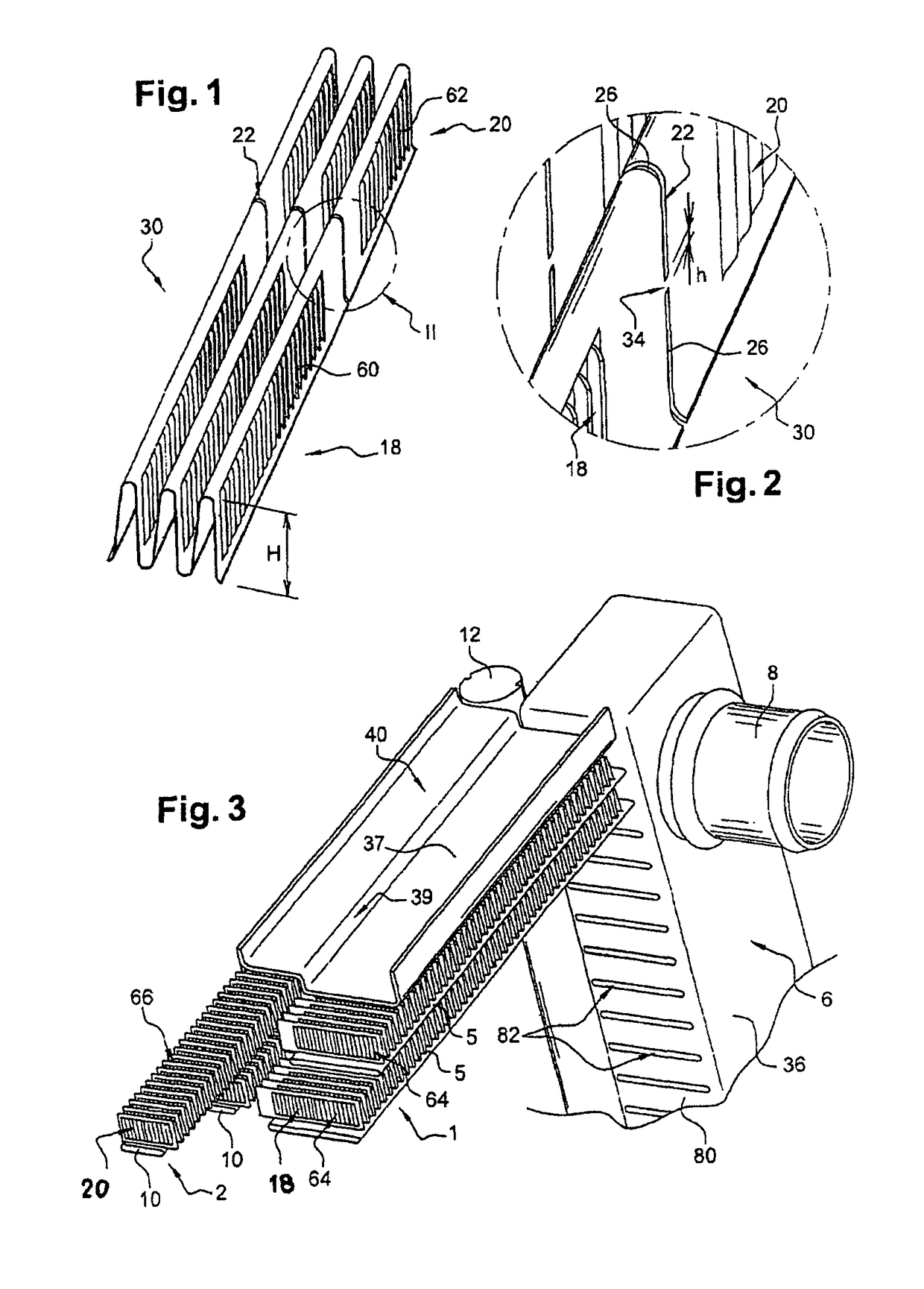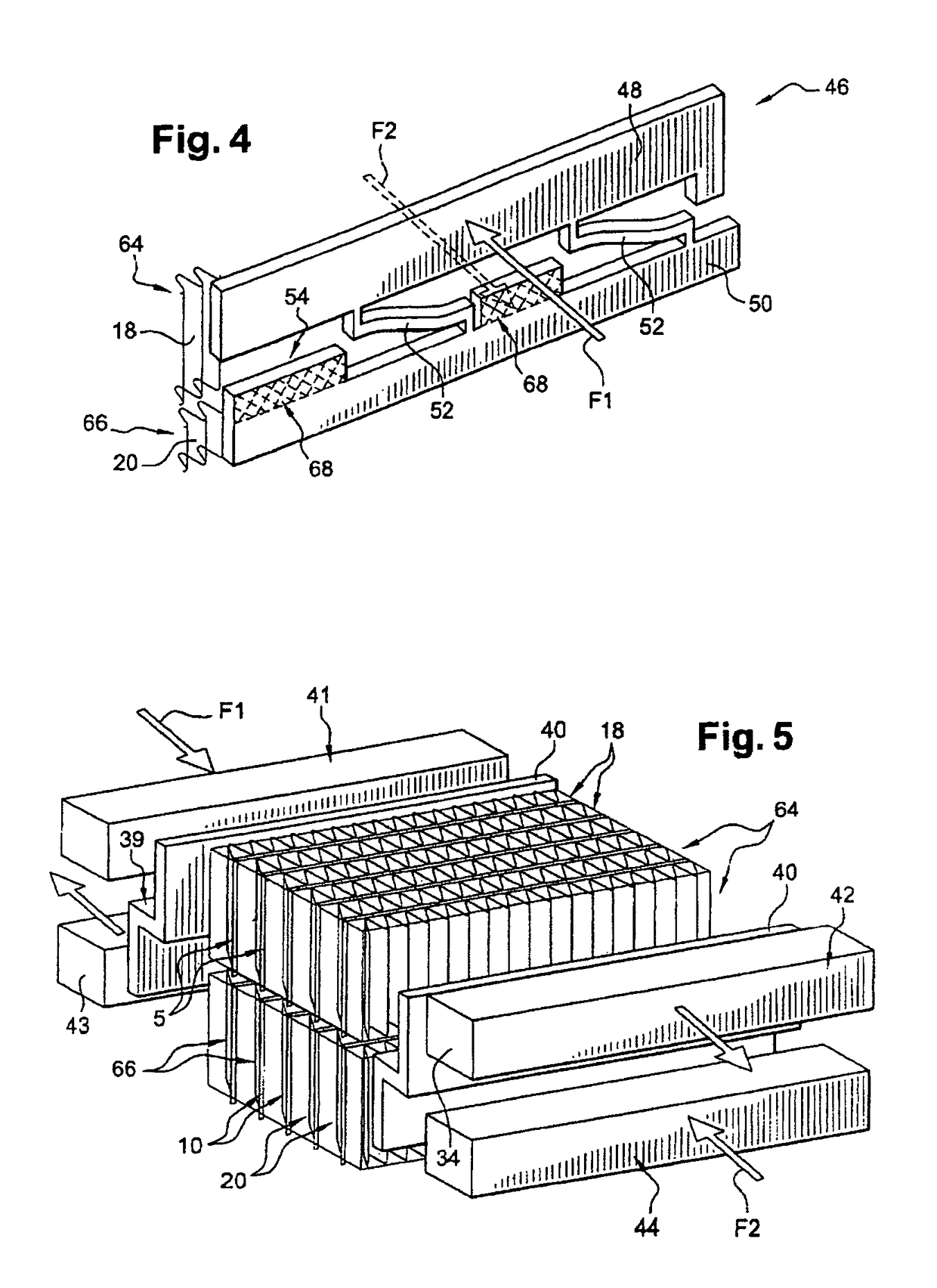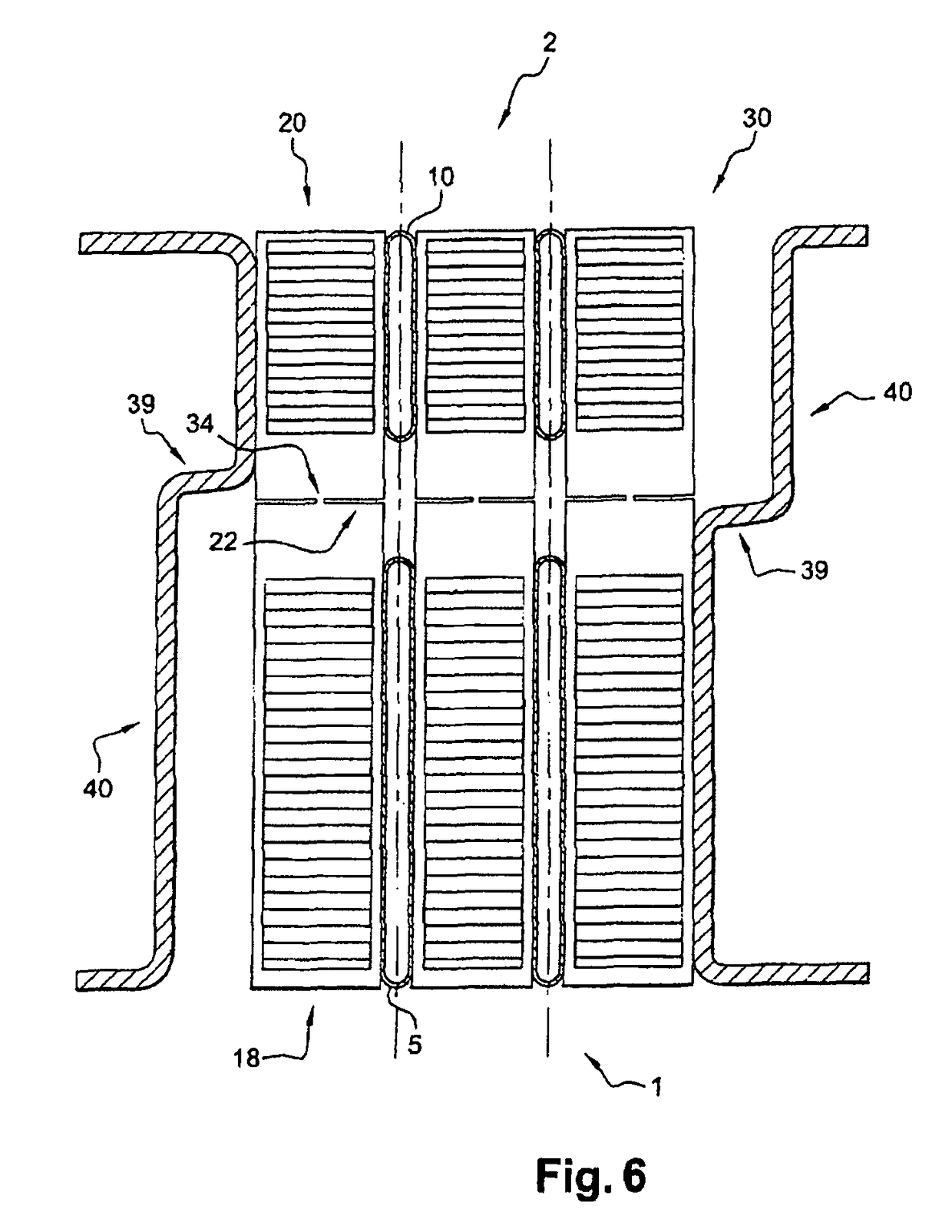Method of producing a heat exchanger module
a heat exchanger and module technology, applied in the direction of tubular elements, stationary tubular conduit assemblies, tubular elements, etc., can solve the problem of not providing perfect thermal insulation, and achieve the effect of eliminating the thermal bridg
- Summary
- Abstract
- Description
- Claims
- Application Information
AI Technical Summary
Benefits of technology
Problems solved by technology
Method used
Image
Examples
Embodiment Construction
[0047]FIGS. 1 and 2 depict a heat-exchange fin, particularly for cooling, according to the invention. Said fin consists of a strip 30 comprising a first heat-exchange zone 18, intended to collaborate with tubes of a first heat exchanger, and a second heat-exchange zone 20, intended to collaborate with tubes of a second heat exchanger. Such fins are able to perform an exchange of heat between the air and a fluid circulating through the tubes. They are, for example, made of aluminum.
[0048]Each heat-exchange zone 18, 20 may be equipped with means for disturbing the flow of air, also known as louvers 60, 62, known to those skilled in the art.
[0049]Advantageously, the configuration of said louvers is adapted to suit the type of exchanger equipped. They may, for example, be orientated top-to-tail on either side of an axis of symmetry, this being in each heat-exchange zone 18, 20. In other words, in the first heat-exchange zone 18 there are, on each side of a first axis of symmetry, louver...
PUM
| Property | Measurement | Unit |
|---|---|---|
| Fraction | aaaaa | aaaaa |
| Shape | aaaaa | aaaaa |
| Height | aaaaa | aaaaa |
Abstract
Description
Claims
Application Information
 Login to View More
Login to View More - R&D
- Intellectual Property
- Life Sciences
- Materials
- Tech Scout
- Unparalleled Data Quality
- Higher Quality Content
- 60% Fewer Hallucinations
Browse by: Latest US Patents, China's latest patents, Technical Efficacy Thesaurus, Application Domain, Technology Topic, Popular Technical Reports.
© 2025 PatSnap. All rights reserved.Legal|Privacy policy|Modern Slavery Act Transparency Statement|Sitemap|About US| Contact US: help@patsnap.com



